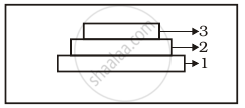Advertisements
Advertisements
प्रश्न
Answer the following question.
"The size of a population for any species is not a static parameter." Justify the statement with specific reference to fluctuations in the population density of a region in a given period of time.
उत्तर
The size of a population of any species is not a static parameter. It keeps changing in time, depending on various factors including food availability, predation pressures, and weather.
The population density in a given period can fluctuate due to the following four factors:
- Natality: It refers to the number of births during a given period in the population that are added to the initial density.
- Mortality: It refers to the number of deaths during a given period that reduced the size.
- Immigration: It is the number of individuals of the same species that have come into the habitat from elsewhere during the given period.
- Emigration: It is the number of individuals who left the habitat and have gone elsewhere.
संबंधित प्रश्न
Construct an age pyramid which reflects a stable growth status of human population.
What is reproductive fitness? Explain it with the help of an example.
Measures of ‘Central tendency’ refer to:
Which of the following would necessarily decrease the density of a population in a given habitat?

Label the three tiers 1, 2, 3 given in the above age pyramid.
Define ‘zero population growth rate’. Draw a age pyramid for the same.
The following diagrams are the age pyramids of different populations. Comment on the status of these populations.

Write the best method to measure the population density of a single Banyan tree in comparison to Partlzenium weeds in a forest by an ecologist. Explain and justify your answer.

Identify the type of pyramid given above. Write the identifying feature on the basis of which you identified it.
With the help of neatly labelled diagrams, explain the different types of age pyramids of human population.
